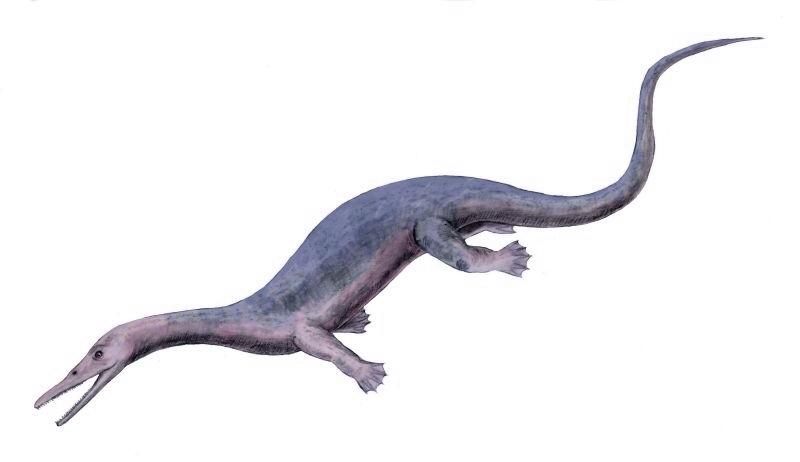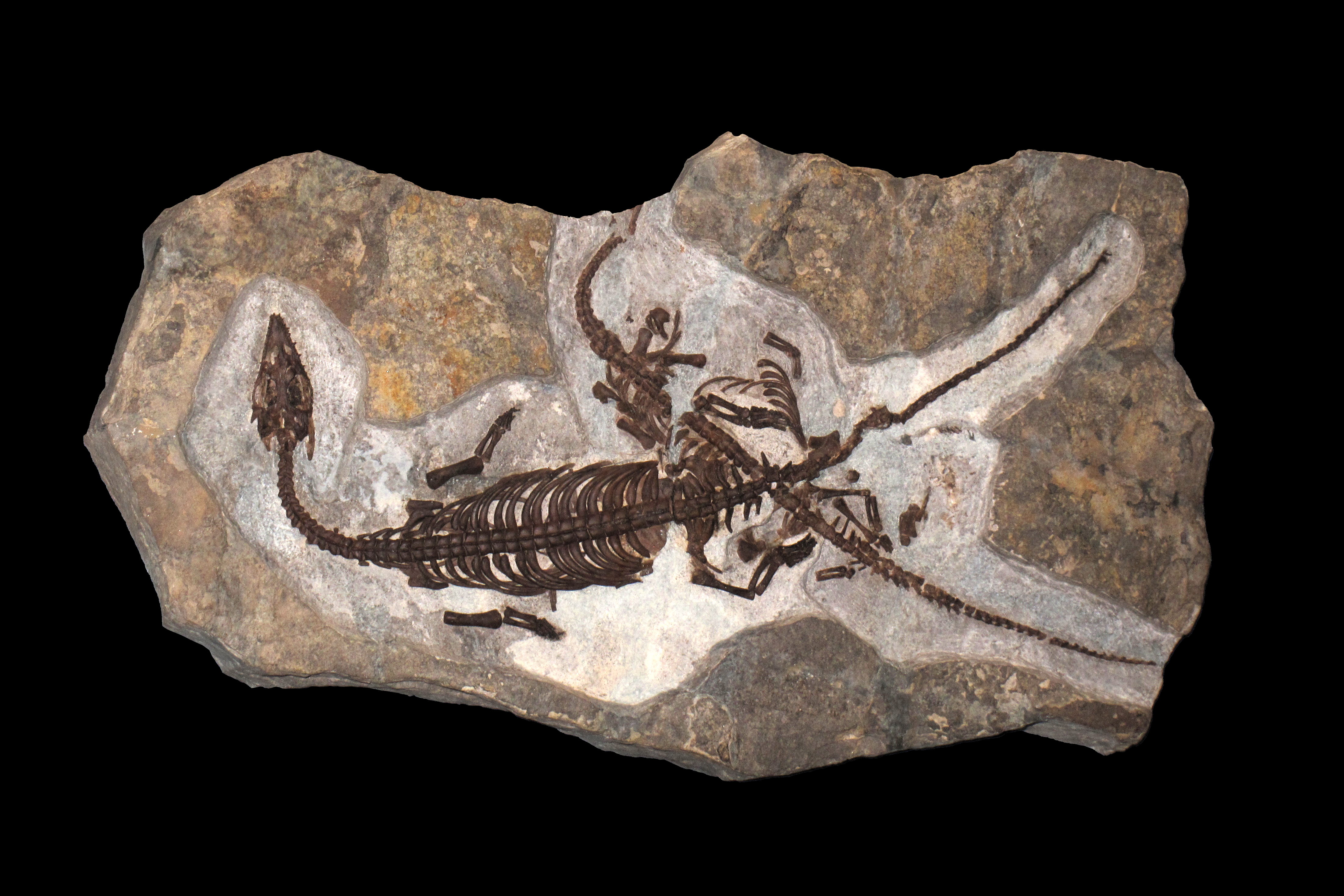|
Odoiporosaurus
''Odoiporosaurus'' is an extinct genus of pachypleurosaur known from the Middle Triassic (middle Anisian stage) Besano Formation (Grenzbitumenzone) of northern Italy. It contains a single species, ''Odoiporosaurus teruzzii''. ''Odoiporosaurus'' is the sister taxon of the group formed by ''Serpianosaurus'' and ''Neusticosaurus'', and together with the older and more primitive '' Dactylosaurus'' plus '' Anarosaurus'' clade, they form a monophyletic In cladistics for a group of organisms, monophyly is the condition of being a clade—that is, a group of taxa composed only of a common ancestor (or more precisely an ancestral population) and all of its lineal descendants. Monophyletic gro ... group of European pachypleurosaurids. References Triassic plesiosaurs Fossil taxa described in 2014 Fossils of Italy Anisian life Sauropterygian genera {{triassic-reptile-stub ... [...More Info...] [...Related Items...] OR: [Wikipedia] [Google] [Baidu] |
Odoiporosaurus Teruzzii Skull
''Odoiporosaurus'' is an extinct genus of pachypleurosaur known from the Middle Triassic (middle Anisian stage) Besano Formation (Grenzbitumenzone) of northern Italy. It contains a single species, ''Odoiporosaurus teruzzii''. ''Odoiporosaurus'' is the sister taxon of the group formed by ''Serpianosaurus'' and '' Neusticosaurus'', and together with the older and more primitive ''Dactylosaurus'' plus ''Anarosaurus'' clade, they form a monophyletic In cladistics for a group of organisms, monophyly is the condition of being a clade—that is, a group of taxa composed only of a common ancestor (or more precisely an ancestral population) and all of its lineal descendants. Monophyletic gro ... group of European pachypleurosaurids. References Triassic plesiosaurs Fossil taxa described in 2014 Fossils of Italy Anisian life Sauropterygian genera {{triassic-reptile-stub ... [...More Info...] [...Related Items...] OR: [Wikipedia] [Google] [Baidu] |
Pachypleurosaur
left, 220px, '' Pachypleurosaurus'' Pachypleurosauria is an extinct clade of primitive sauropterygian reptiles that vaguely resembled aquatic lizards, and were limited to the Triassic period. They were elongate animals, ranging in size from , with small heads, long necks, paddle-like limbs, and long, deep tails. The limb girdles are greatly reduced, so it is unlikely these animals could move about on land. The widely spaced peg-like teeth project at the front of the jaws, indicating that these animals fed on fish. In the species ''Prosantosaurus'', it was observed that they fed on small fishes and crustaceans which they devoured entirely and that its teeth regrew after they broke off. This was the first observation of tooth replacement in a European pachypleurosaur, the only other discovery of such an event was made in China. Classification Pachypleurosaurs were originally and are often still included within the Nothosauroidea (Carroll 1988, Benton 2004). In some more recent ... [...More Info...] [...Related Items...] OR: [Wikipedia] [Google] [Baidu] |
Besano Formation
The Besano Formation is a geological formation in the southern Alps of northwestern Italy and southern Switzerland. This formation, a short but fossiliferous succession of dolomite and black shale, is famous for its preservation of Middle Triassic marine life including fish and aquatic reptiles. It is exposed in the vicinity of Monte San Giorgio and is among the formations responsible for the area being designated as a UNESCO World Heritage Site. In Switzerland, it is also known as the Grenzbitumenzone. Geology General geology The Grenzbitumenzone is a relatively thin band of dark dolomite and shale, approximately 5 to 16 meters in total thickness. It extends about 10 km from east to west along the northern edge of Monte San Giorgio. In individual outcrops, the Grenzbitumenzone overlies the lower part of San Salvatore Dolomite, a thick and widespread carbonate-rich formation. The later parts of the San Salvatore Formation, exposed north of Monte San Giorgio, are partiall ... [...More Info...] [...Related Items...] OR: [Wikipedia] [Google] [Baidu] |
Serpianosaurus
''Serpianosaurus'' is an extinct genus of pachypleurosaurs known from the Middle Triassic (late Anisian and early Ladinian stages) deposits of Switzerland and Germany. It was a small reptile, with the type specimen of ''S. mirigiolensis'' measuring long. Fossils of the type species, '' S. mirigolensis'', have been found from the middle Grenzbitumenzone, the oldest strata of Monte San Giorgio, Switzerland, an area well known for its abundant pachypleurosaur remains. The locality dates back to sometime around the Anisian/Ladinian boundary of the Middle Triassic, around 242 Ma, with ''Serpianosaurus'' most likely occurring strictly during the latest Anisian. This makes it the one of the oldest sauropterygians from Monte San Giorgio, with only the rare pachypleurosaur ''Odoiporosaurus'' being older. Certain aspects of its morphology also suggest it is one of the most basal forms. Cajus G. Diedrich in 2013 described and named a second species, ''S. germanicus'', based on a postcra ... [...More Info...] [...Related Items...] OR: [Wikipedia] [Google] [Baidu] |
Middle Triassic
In the geologic timescale, the Middle Triassic is the second of three epochs of the Triassic period or the middle of three series in which the Triassic system is divided in chronostratigraphy. The Middle Triassic spans the time between Ma and Ma (million years ago). It is preceded by the Early Triassic Epoch and followed by the Late Triassic Epoch. The Middle Triassic is divided into the Anisian and Ladinian ages or stages. Formerly the middle series in the Triassic was also known as Muschelkalk. This name is now only used for a specific unit of rock strata with approximately Middle Triassic age, found in western Europe. Middle Triassic fauna Following the Permian–Triassic extinction event, the most devastating of all mass-extinctions, life recovered slowly. In the Middle Triassic, many groups of organisms reached higher diversity again, such as the marine reptiles (e.g. ichthyosaurs, sauropterygians, thallatosaurs), ray-finned fish and many invertebrate groups like ... [...More Info...] [...Related Items...] OR: [Wikipedia] [Google] [Baidu] |
Dactylosaurus
''Dactylosaurus'' is a genus of nothosaur in the family Pachypleurosauridae. Along with '' Anarosaurus'', ''Dactylosaurus'' was one of the earliest known pachypleurosaurs to come from Europe.Lepidosauromorpha: Pachypleurosauridae: Dactylosaurus & Anarosaurus Palaeos.com. Last accessed 2008-07-04. Etymology ''Dactylosaurus'' comes from the ' (), "" and ' (), meaning "" or ...[...More Info...] [...Related Items...] OR: [Wikipedia] [Google] [Baidu] |
Fossils Of Italy
A fossil (from Classical Latin , ) is any preserved remains, impression, or trace of any once-living thing from a past geological age. Examples include bones, shells, exoskeletons, stone imprints of animals or microbes, objects preserved in amber, hair, petrified wood and DNA remnants. The totality of fossils is known as the ''fossil record''. Paleontology is the study of fossils: their age, method of formation, and evolutionary significance. Specimens are usually considered to be fossils if they are over 10,000 years old. The oldest fossils are around 3.48 billion years old to 4.1 billion years old. Early edition, published online before print. The observation in the 19th century that certain fossils were associated with certain rock strata led to the recognition of a geological timescale and the relative ages of different fossils. The development of radiometric dating techniques in the early 20th century allowed scientists to quantitatively measure the absolute ... [...More Info...] [...Related Items...] OR: [Wikipedia] [Google] [Baidu] |
Fossil Taxa Described In 2014
A fossil (from Classical Latin , ) is any preserved remains, impression, or trace of any once-living thing from a past geological age. Examples include bones, shells, exoskeletons, stone imprints of animals or microbes, objects preserved in amber, hair, petrified wood and DNA remnants. The totality of fossils is known as the ''fossil record''. Paleontology is the study of fossils: their age, method of formation, and evolutionary significance. Specimens are usually considered to be fossils if they are over 10,000 years old. The oldest fossils are around 3.48 billion years old to 4.1 billion years old. Early edition, published online before print. The observation in the 19th century that certain fossils were associated with certain rock strata led to the recognition of a geological timescale and the relative ages of different fossils. The development of radiometric dating techniques in the early 20th century allowed scientists to quantitatively measure the absolute ... [...More Info...] [...Related Items...] OR: [Wikipedia] [Google] [Baidu] |
Triassic Plesiosaurs
The Triassic ( ) is a geologic period and system (stratigraphy), system which spans 50.6 million years from the end of the Permian Period 251.902 million years ago (Year#Abbreviations yr and ya, Mya), to the beginning of the Jurassic Period 201.36 Mya. The Triassic is the first and shortest period of the Mesozoic, Mesozoic Era. Both the start and end of the period are marked by major extinction events. The Triassic Period is subdivided into three epochs: Early Triassic, Middle Triassic and Late Triassic. The Triassic began in the wake of the Permian–Triassic extinction event, which left the Earth's biosphere impoverished; it was well into the middle of the Triassic before life recovered its former diversity. Three categories of organisms can be distinguished in the Triassic record: survivors from the extinction event, new groups that flourished briefly, and other new groups that went on to dominate the Mesozoic Era. Reptiles, especially archosaurs, were the chief terrestrial vert ... [...More Info...] [...Related Items...] OR: [Wikipedia] [Google] [Baidu] |
Monophyletic
In cladistics for a group of organisms, monophyly is the condition of being a clade—that is, a group of taxa composed only of a common ancestor (or more precisely an ancestral population) and all of its lineal descendants. Monophyletic groups are typically characterised by shared derived characteristics ( synapomorphies), which distinguish organisms in the clade from other organisms. An equivalent term is holophyly. The word "mono-phyly" means "one-tribe" in Greek. Monophyly is contrasted with paraphyly and polyphyly as shown in the second diagram. A ''paraphyletic group'' consists of all of the descendants of a common ancestor minus one or more monophyletic groups. A '' polyphyletic group'' is characterized by convergent features or habits of scientific interest (for example, night-active primates, fruit trees, aquatic insects). The features by which a polyphyletic group is differentiated from others are not inherited from a common ancestor. These definitions have tak ... [...More Info...] [...Related Items...] OR: [Wikipedia] [Google] [Baidu] |
Clade
A clade (), also known as a monophyletic group or natural group, is a group of organisms that are monophyletic – that is, composed of a common ancestor and all its lineal descendants – on a phylogenetic tree. Rather than the English term, the equivalent Latin term ''cladus'' (plural ''cladi'') is often used in taxonomical literature. The common ancestor may be an individual, a population, or a species (extinct or extant). Clades are nested, one in another, as each branch in turn splits into smaller branches. These splits reflect evolutionary history as populations diverged and evolved independently. Clades are termed monophyletic (Greek: "one clan") groups. Over the last few decades, the cladistic approach has revolutionized biological classification and revealed surprising evolutionary relationships among organisms. Increasingly, taxonomists try to avoid naming taxa that are not clades; that is, taxa that are not monophyletic. Some of the relationships between organisms ... [...More Info...] [...Related Items...] OR: [Wikipedia] [Google] [Baidu] |
Anarosaurus
''Anarosaurus'' is an extinct genus of pachypleurosaurs that lived in the Middle Triassic period (Anisian) and has been found in the Jena Formation and the Karlstadt Formation of Germany and the Winterswijk Quarry ( Lower Muschelkalk) of The Netherlands. Two species are known: ''A. pumilio'' (the type species) and ''A. heterodontus''. The holotype of ''A. pumilio'' was originally housed at the Institut und Museum fur Geologie und Palaontologie, Georg-August-Universitat, Gottingen, but can no longer be located today because it was lost or destroyed during World War II. ''Anarosaurus'' was a small reptile with an estimated body length of . See also * List of plesiosaurs This list of plesiosaurs is a comprehensive listing of all genera that have ever been included in the order Plesiosauria, excluding purely vernacular terms. The list includes all commonly accepted genera, but also genera that are now considered inv ... References Triassic plesiosaurs Extinct animals of ... [...More Info...] [...Related Items...] OR: [Wikipedia] [Google] [Baidu] |




